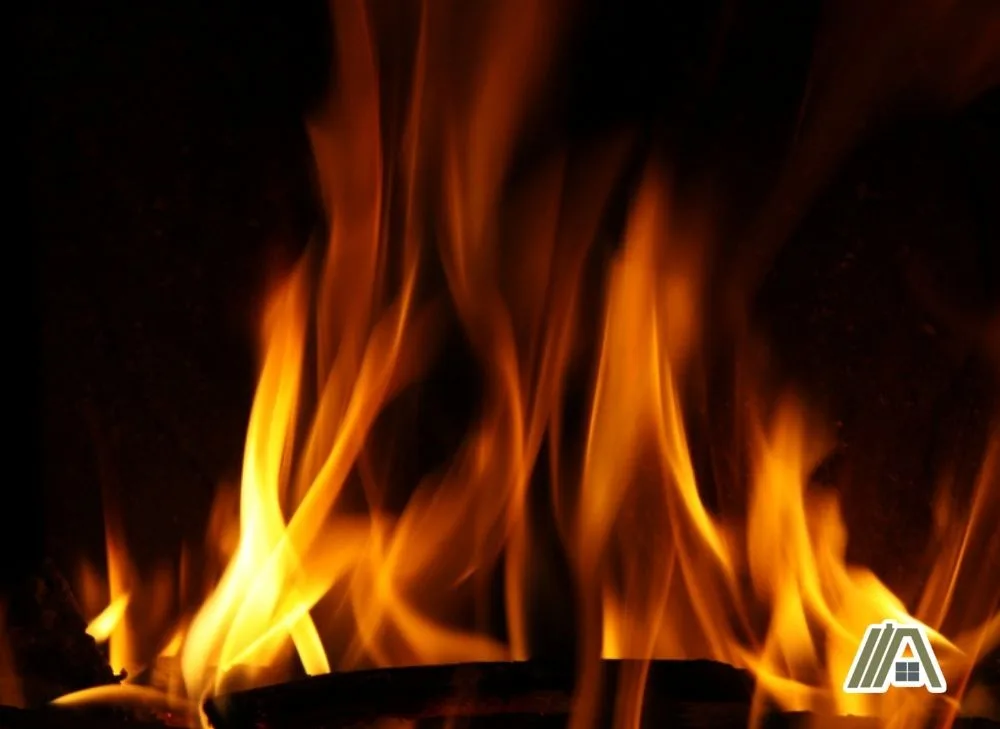Blowtorches make a very specific noise, whether they are the big commercial ones or the small culinary ones. So, if you say your dryer sounds like a blowtorch, everyone will know what you mean.
The good news is that this actually makes it easy to figure out if there is a problem.

Gas dryers should not sound like blowtorches. This is a sign that the gas is being released at overly high pressure. The most likely cause is an incorrectly adjusted valve. To fix it, expose the burner assembly and adjust the valve to the manufacturer’s specifications. Alternatively, it may be a faulty valve.
Some Noise Is Expected
Dryers are not quiet appliances. Between the blowing air and the spinning drum, there are going to be noises in the smoothest functioning unit.
Gas dryers have the addition of the processes occurring in the burner assembly.

First, you have the whoosh of ignition. When the gas is first released and comes into contact with the heated ignitor, a mini explosion happens as the gas catches fire. This sound is momentary and might not even be very loud.
Secondly, you have the noise of combustion. All flames burn with a noise. Whether or not you can hear the noise will depend on the size of the flame, how close you are to it, and what other noises are happening nearby.
With gas dryers, you are unlikely to hear this sound over the other noises of the dryer.
Finally, there is the sound of gas being released. This is a hissing sound and is produced as long as the gas is entering the burner. If you are going to hear a continuous sound from your burner assembly, this is it, and you may even liken it to a muted blowtorch sound.
However, a louder blowtorch noise is a sign that something is wrong.
Blowtorch Noises Mean the Gas Pressure Is Too High
If your dryer starts to sound like a blowtorch, then the most likely cause is that the gas pressure is too high.
Gas released under greater pressure makes a louder sound.
In addition, when the gas pressure is high, the rate at which fuel is released by your dryer is greater. When too much fuel is being released, the combustion reaction becomes less stable.
In other words, there is not enough oxygen for the amount of fuel being released, resulting in an incorrect mix of air and gas. This creates pockets of more flammable air and less flammable air.
Instead of igniting and burning continuously, the flame “jumps” from one pocket of flammable air to the next, not burning the less flammable pockets. The initial ignition whoosh is repeated over and over.
Such situations are typically also characterized by a different colored flame. Typically, your gas dryer will burn with a blue flame—perhaps with a bit of yellow.
A flame with too much gas pressure will appear almost completely yellow. Unstable combustion is typically incomplete, which means that there is more carbon left over after the reaction. This leftover carbon turns the flame yellow.

Often, the problem is simply that the pressure valve on your gas dryer is set too high.
Problems With High Gas Pressure
If gas is released into the burner at an overly high pressure can lead to multiple problems down the line if it is not addressed quickly.
For one, having high gas pressure means that you use more fuel than necessary. This, in turn, means that you have to pay for that extra gas. This can add up quickly over time.
More importantly, high gas pressure can cause overheating in your dryer. When more gas is released, then more gas is burned. This means more heat is produced.
Over time, the excessive heat and pressure will wear down the internal parts of your dryer more quickly than would happen if the valve was correctly adjusted. This means that you would also need to spend money to repair the internal parts or even replace the entire machine.
Fixing the Noise Should Be Simple
If your valve is set incorrectly, then it is an easy process to adjust and fix.
To start, you should turn off the gas to the dryer and also unplug it from any outlets.
To find the valve, you will likely need to access the back panel of your machine. From there, you can locate the regulator. If you are not sure what the regulator looks like, you can check in the owner’s manual.
The manual, the regulator, and/or the back panel should tell you what your gas dryer valve should be set to. If they only give you the ideal pressure reading, you can use a manometer (amazon link).
Adjusting the valve should be simple and self-explanatory when you see it.
If you need further assistance, you should reach out to the dryer manufacturer.
Possible Alternative Cause: Faulty Gas Valve
Now, if your gas valve is adjusted properly, then there is an alternative cause. Happily, all the work you did to expose the gas valve is not wasted because another cause of the blowtorch noise is a faulty gas valve.
This will be unable to regulate the gas flow into the burner. Thus, a faulty gas valve can also result in gas being released at excessively high pressure.
Problems With a Faulty Gas Valve
In addition to all of the previously stated issues associated with high gas pressure, when the valve is faulty, there are other problems that can arise.
Depending on what is wrong with the valve, the gas pressure can also drop too low. The dryer won’t heat as it should. It may not even ignite.
If this is the case, then your dryer is completely unusable since it would not be able to generate heat at all. This is because there is no fuel available for your dryer to complete any combustion.
Replacing the Gas Valve
If you have a faulty gas valve, you will have to replace it.
You can hire a professional to replace it for you. If you don’t know what you are doing, this is the safest route to take because you will be working with both gas and electrical components. Therefore, it can be very easy to harm yourself if you are not careful.
It is, however, a possible DIY task.
Before you start, it is important to have a replacement valve that is compatible with your dryer. In addition, you need to also turn off the power to your dryer and shut off the gas before beginning.
You will need to locate the gas valve. To do this, you will likely need to remove the back panel. However, the valve’s location is likely to vary depending on the dryer you have.
To remove the current gas valve, you will need to use a wrench to loosen it carefully. Make sure to be cautious and not damage any pipes or surrounding mechanisms.
You will then want to clean the fixture with a soft towel before installing the new valve.
To finish, you will want to reassemble the rest of your dryer.
Gas valve problems can also cause the gas dryer to emit a whistling sound.
Sources
https://physics.stackexchange.com/questions/426698/why-does-fire-make-very-little-sound
https://www.process-heating.com/articles/86217-combustion-pulsation-and-noise
https://www.houzz.com/discussions/2506750/lp-gas-pressure-too-high
https://theportablelaundry.com/how-to-replace-gas-valve-in-a-gas-dryer/
https://www.justanswer.com/appliance/33k4k-wrong-new-lg-gas-dryer-hooked-lp-gas.html
https://www.sciencedirect.com/science/article/pii/S1540748914004003


